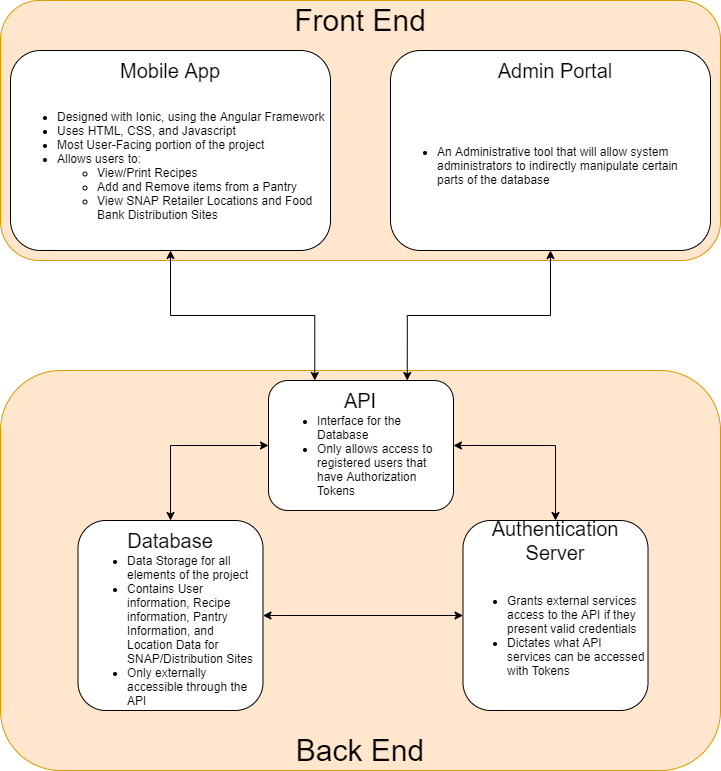Project Description
Food banks have always had problems with getting food to families, and in recent times this demand is increasing even more.
Even before the pandemic, Saint Mary's Food Bank and other food banks have had trouble making sure that food is not thrown away and wasted, which is caused in part by the uncertainty of what food will come through the food banks, meaning the distribution of food products is not uniform.
For example, in the United States alone:
- Every year, 80 billion pounds of food are thrown away in the United States.
- Food banks across America receive different food products in varying quantities from donors throughout the country.
- Foodbank workers may be unfamiliar with products given to the food bank.
All of these factors create an inefficiency that is hard to solve with the changing supplies available to the food banks and with the lack of knowledge to best use the food. This is where our group, Fridge Filler, comes in.
With our sponsors, Richard Rushforth and Sean Ryan, we have partnered with Saint Mary's Food Bank (SMFBA) to help solve this problem. They believe that the current interaction between the food banks and the people who use them is inefficient.
The way they interact now is that people come into the food bank, receive a box full of whatever the food bank has available at that time, and then the person has to try and figure out what they can make with what they have just received.
This is fine for some people, but not all people like to cook or know what they can make with the ingredients given. Along with the uncertainty of what will be at the food bank creates problems with the families and makes everything more chaotic.
Fridge Filler aims to create a mobile application that can serve as a go-between for the food banks and the people and families that use the food banks. That way, families can figure out what food to cook with the ingredients they have through simple, easy-to-follow recipes.
The app also can recommend places to pick up missing ingredients and even a way to sync what you have at home with the app. The overall goal of the application is to help families effortlessly plan meals and to help ensure that the food at the distribution sites is used more effectively.
